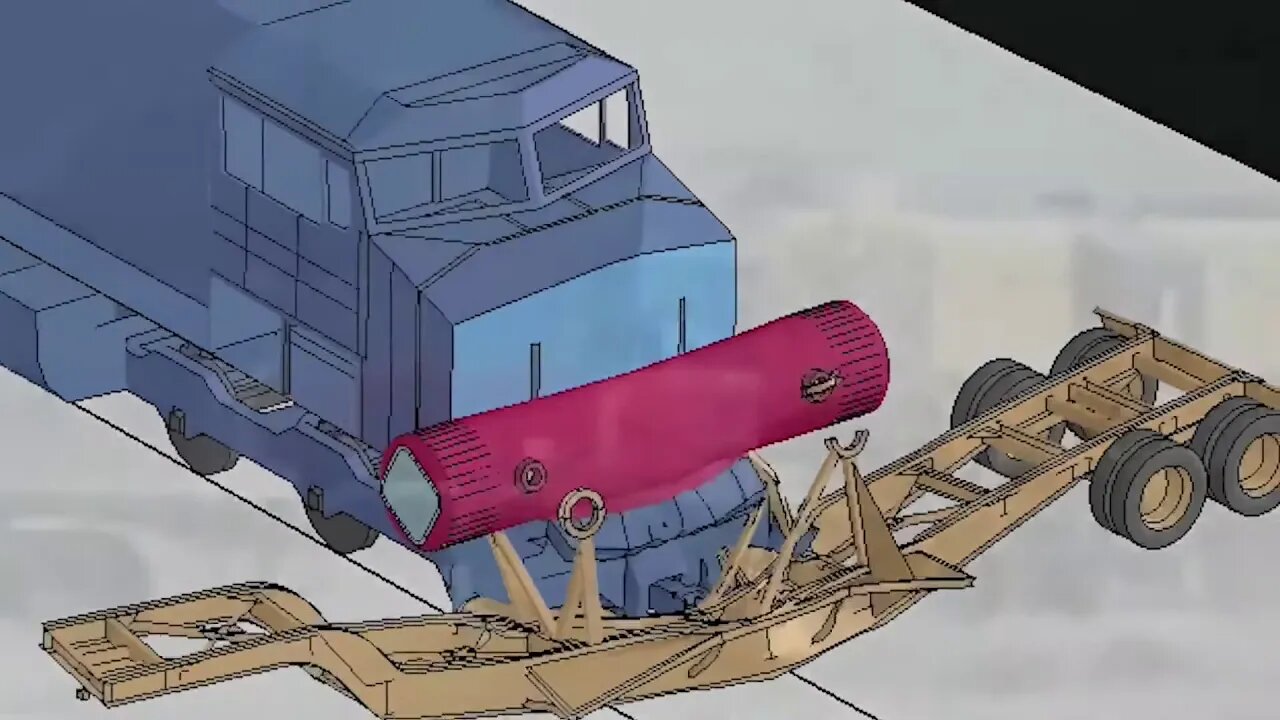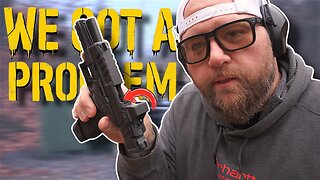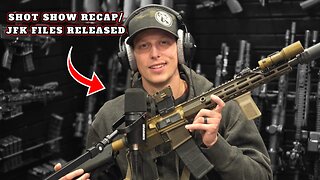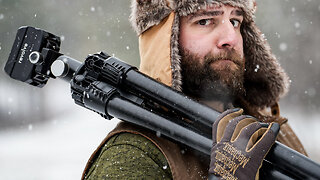Premium Only Content

Spent Nuclear Fuel Transportation Container Accident Testing
Spent nuclear fuel (SNF) containers, also known as “casks” in the United States, or “flasks” in other countries, are used to transport SNF around the world. In the U.S., SNF transport is regulated by the U.S. Department of Transportation and the U.S. Nuclear Regulatory Commission. Design and testing requirements for SNF containers are internationally standardized by the International Atomic Energy Agency. The required tests must be conducted in the following sequence:
1.Free Drop: 30 ft (9 meters) free drop onto an essentially unyielding surface
2. Puncture: 40 in (1 meter) drop onto a 6 in wide (16 centimeter), 8 in (20 centimeter) long steel rod
3.Thermal: exposure to an engulfing fire at 1475°F (800°C) for 30 minutes
4.Immersion – fissile material: Immersion in 3 ft (0.9 meters) of water for 8 hours
These tests equate to the container hitting a concrete highway overpass at high speed (Free Drop test), then falling onto a small rigid structural support (Puncture test), then being involved in a severe and long-lasting fuel fire (Thermal test), and then rolling into a shallow body of water (Immersion test). During and after the tests, the container must contain the nuclear material, limit radiation doses to acceptable levels, and prevent a nuclear chain reaction.
In the video, the structures on the ends of the SNF containers that dent or crush in the tests are called “impact limiters.” They are specifically designed to be crushed to absorb the damage from an accident and protect the SNF container and its contents.
A second, deep-water immersion test must also be conducted on an undamaged SNF container (not as part of the sequence listed above)
5. Immersion – all packages: Immersion in 660 ft (200 meters) of water for 1 hour
An “essentially unyielding surface” is a key element of the drop test. It means that the SNF container absorbs ALL of the force and damage from the impact. For physical tests, an “essentially unyielding surface” generally has to be 10 times the mass of the SNF container. So, a 30 ton SNF container would have to be dropped onto a 300 ton surface, and a 200 ton SNF container would have to be dropped onto a 2,000 ton surface. For this reason, it is common for the SNF container drop tests to now be conducted using computer model simulations.
References: 49 Code of Federal Regulations; 10 Code of Federal Regulations 71.73; 10 Code of Federal Regulations 71.61
The U.S. Department of Energy’s Office of Nuclear Energy works with industry and other stakeholders to extend the life cycles of our current fleet of reactors and to develop new technologies that will help meet future environmental and energy goals.
Follow us on social media:
Facebook: https://www.facebook.com/nuclearenerg...
Twitter: https://www.twitter.com/GovNuclear/
LinkedIn: https://www.linkedin.com/showcase/Nuc...
---
Subscribe so you don't miss a video http://youtube.com/energygov
Check out our cool pics on http://instagram.com/energy
Listen to our podcast http://energy.gov/podcast
More to learn on http://facebook.com/energygov
Keep up with the tweets at http://twitter.com/ENERGY
Subscribe now for more videos from over 280 sources plus my own videos!
Subscribe to my entertainment channel too or at least peek at my other channel !!! https://www.youtube.com/channel/UCiNFsoytAuun90UzU5AuxXg
https://www.bitchute.com/channel/YsJ0PYUWx5An/
https://www.patreon.com/user?u=26453564
-
 5:05
5:05
Kurt's News
1 month agoThe View Hosts Turn on Each Other After One Calls Biden a LIAR
941 -
 19:52
19:52
Adam Does Movies
5 hours ago $1.22 earnedEmilia Pérez Movie Review - It's Uniquely Awful
21.6K3 -
 20:07
20:07
BlackDiamondGunsandGear
11 hours agoSPRINGFIELD ECHELON COMPACT / NOT GOOD
30.2K3 -
 1:05:06
1:05:06
Man in America
11 hours agoThe Terrifying Truth Behind Chemical Fog, Wildfire Smoke & Chemtrails w/ Dr. Robert Young
21.7K23 -
 2:54:47
2:54:47
Tundra Tactical
4 hours ago $0.33 earnedSHOT Show 2025 Wrap Up!! On The Worlds Okayest Gun Live Stream
16K -
 LIVE
LIVE
Right Side Broadcasting Network
1 day agoLIVE REPLAY: President Donald J. Trump Holds His First Rally After Inauguration in Las Vegas - 1/25/25
4,041 watching -
 2:55:24
2:55:24
Jewels Jones Live ®
1 day agoWEEK ONE IN REVIEW | A Political Rendezvous - Ep. 107
110K39 -
 1:33:29
1:33:29
Michael Franzese
1 day agoTrump Wastes No Time: Breaking Down Trump’s First Week Executive Orders | LIVE
121K91 -
 1:26:44
1:26:44
Tactical Advisor
14 hours agoTrump Starting Strong/Shot Show Recap | Vault Room Live Stream 015
87.7K9 -
 10:18
10:18
MrBigKid
9 hours ago $1.89 earnedInsanely Compact Hunting Tripod you HAVEN'T heard of... Revolve
45K4